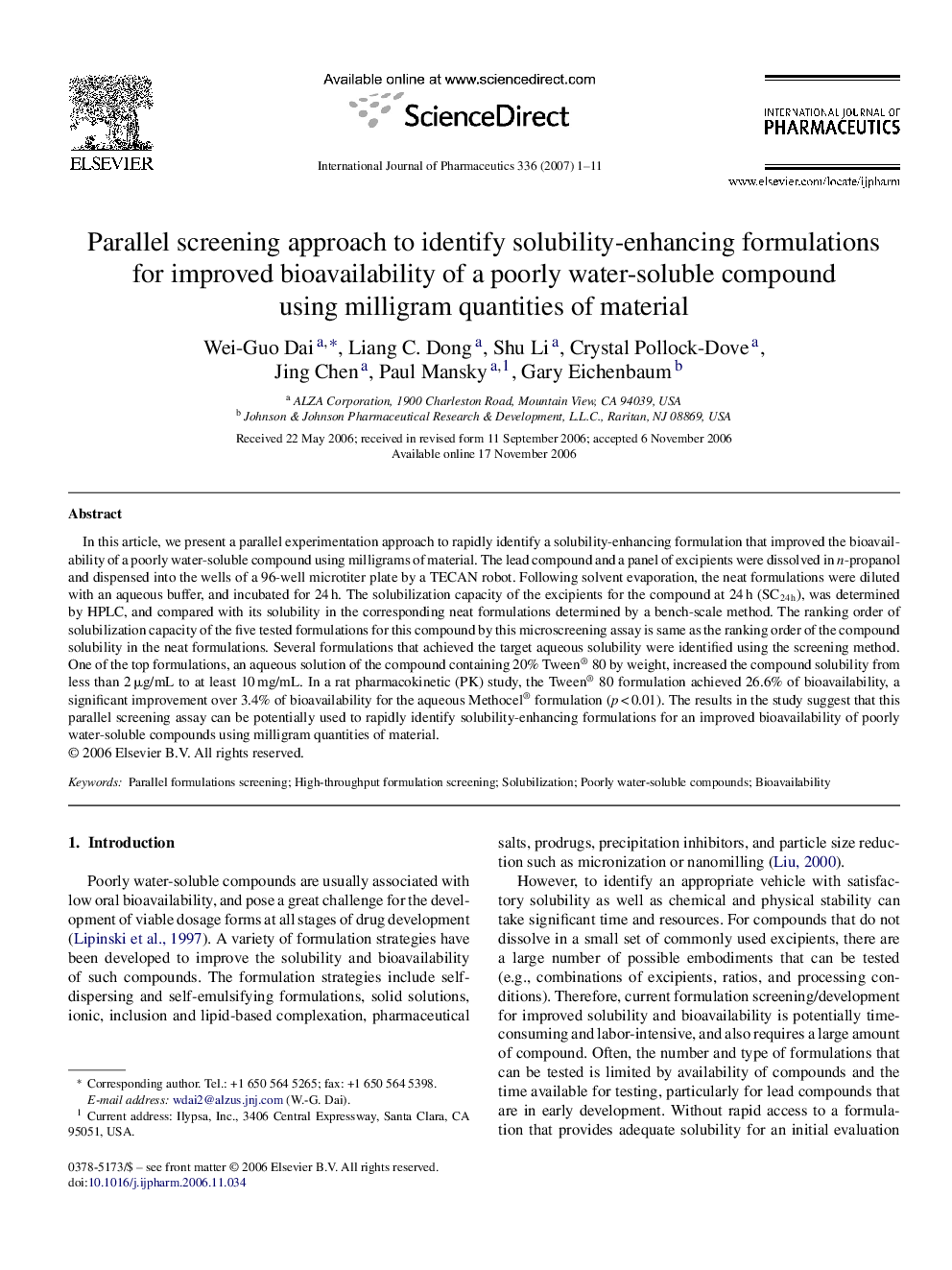| Article ID | Journal | Published Year | Pages | File Type |
|---|---|---|---|---|
| 2506219 | International Journal of Pharmaceutics | 2007 | 11 Pages |
In this article, we present a parallel experimentation approach to rapidly identify a solubility-enhancing formulation that improved the bioavailability of a poorly water-soluble compound using milligrams of material. The lead compound and a panel of excipients were dissolved in n-propanol and dispensed into the wells of a 96-well microtiter plate by a TECAN robot. Following solvent evaporation, the neat formulations were diluted with an aqueous buffer, and incubated for 24 h. The solubilization capacity of the excipients for the compound at 24 h (SC24 h), was determined by HPLC, and compared with its solubility in the corresponding neat formulations determined by a bench-scale method. The ranking order of solubilization capacity of the five tested formulations for this compound by this microscreening assay is same as the ranking order of the compound solubility in the neat formulations. Several formulations that achieved the target aqueous solubility were identified using the screening method. One of the top formulations, an aqueous solution of the compound containing 20% Tween® 80 by weight, increased the compound solubility from less than 2 μg/mL to at least 10 mg/mL. In a rat pharmacokinetic (PK) study, the Tween® 80 formulation achieved 26.6% of bioavailability, a significant improvement over 3.4% of bioavailability for the aqueous Methocel® formulation (p < 0.01). The results in the study suggest that this parallel screening assay can be potentially used to rapidly identify solubility-enhancing formulations for an improved bioavailability of poorly water-soluble compounds using milligram quantities of material.
